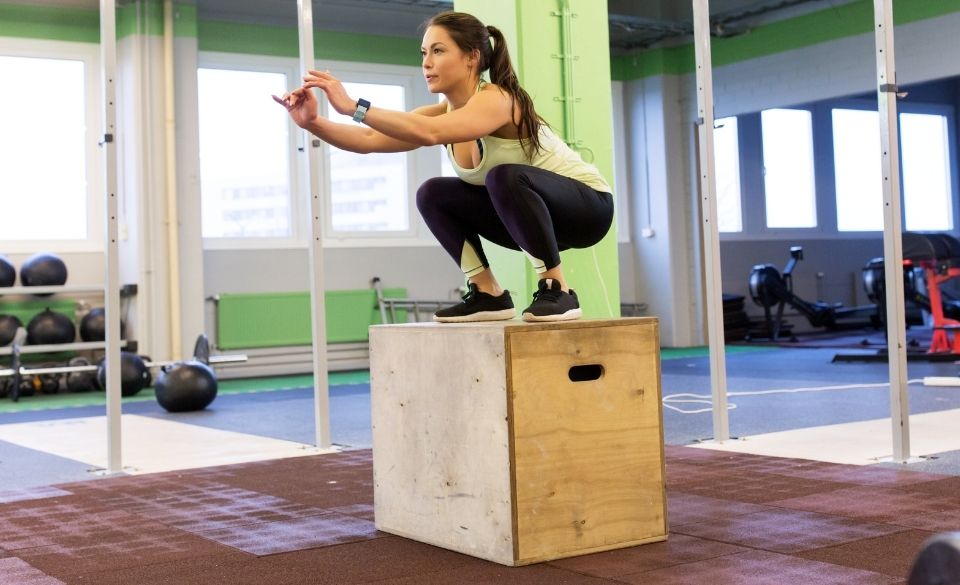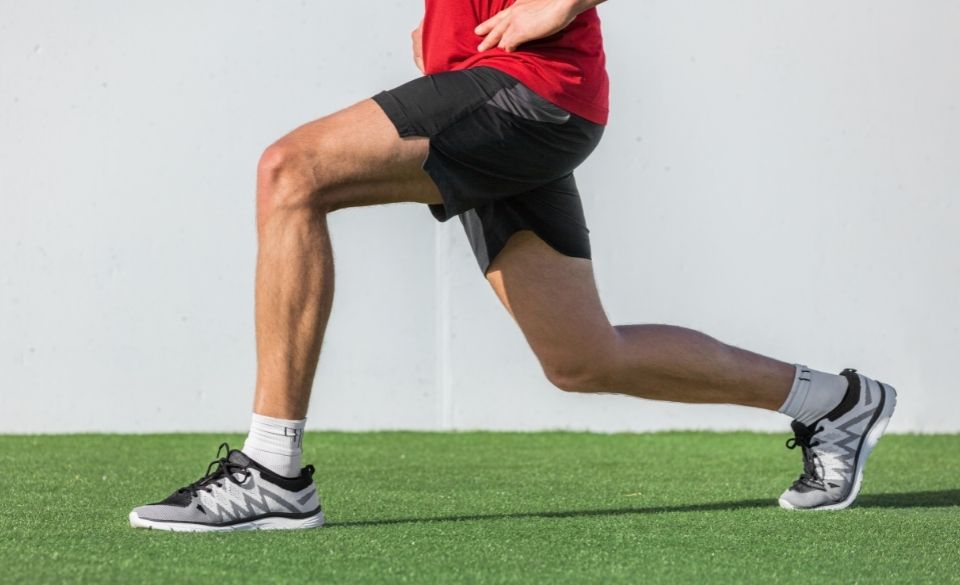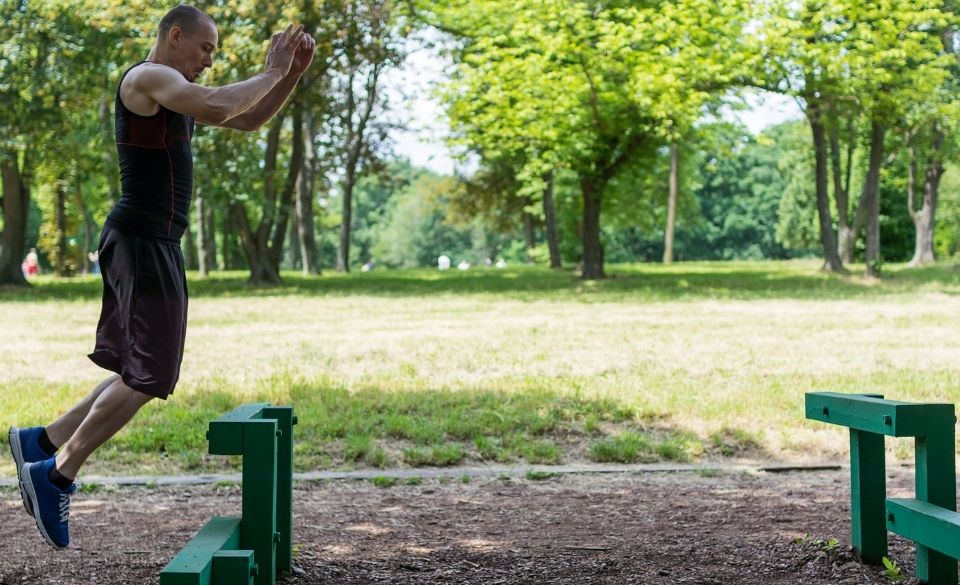
Plyometric Exercises for Speed & Runners – The Ultimate Guide
Page Contents
If you are looking to improve endurance, strength, and speed, plyometric exercises for speed are one of the best forms of aerobic exercise. They help improve overall fitness and as a runner, they also help to improve efficiency, technique, and stride.
In this article, we look at plyometric exercises for speed. We also explain plyometric training definition and help beginners learn what exercises are good for them.
If you are a runner, keep on reading as we will share some of the best plyometric exercises for runners, no matter if you are a marathon, 5k, 10k, or half-marathon runner. Adding plyometric workouts will help improve your results.

Plyometric Exercises For Runners
Plyometric exercises for runners are movements that help to improve speed and efficiency. Often these exercises replicate movements similar to running and teach the body how to be explosive. This helps during the runner’s stride, so you spend as little time on the ground as possible during each stride.
Since plyometric workouts help improve the muscle’s ability to produce force, they are widely used in sports like football, rugby, tennis, and track cycling. So it is no surprise it is being picked up by distance runners.
So knowing plyometrics can be beneficial for a runner, what are some of the best plyometric exercises for runners? Below is a list of exercises and movements that can help benefit your training.
Box Jumps
Box jumps are a great way to improve explosiveness and strengthen your calf, hamstrings, quadriceps, and core. To complete this exercise you will need a box or bench that is at least 40cm high (up to 100cm if you have the technique). However, if you are doing one-legged box jumps, stick to the lower height box.
1. From a standing position, bend down slowly into a squat position.
2. Swing your arms forward quickly and explode up onto the box.
3. Try to land your feet shoulder-width apart
4. Jump back down to the starting position, gently landing with bent knees.
5. Do 2-3 sets of 6-10 repetitions.
Tuck Jumps
Tuck jumps are great exercised for improving stability, strength, and speed. Even though the exercise is for sports where directional change is needed often, it can still benefit the runner by strengthen the lower legs and ankles.
To perform the exercise:
1. Stand up straight with your feet shoulder-width apart.
2. Bend your knees slightly
3. Then throw your arms forward and jump as high as you can.
4. As you reach the height of your jump, bring your knees into your chest.
5. Land gently by bending your knees when hitting the ground.
6. Repeat for 10 to 12 repetitions, and 2-3 sets.
Lateral bounds
Lateral bounds are great for increasing jumping height and speed. It is widely used among football players and can help improve your running stride. Specifically, your take-off during each stride.
To perform this exercise:
1. Begin in a squat position.
2. Then balance on your left leg
3. From that position jump as high as you can and as far to the right as you can.
4. Land on your right foot and move into the single-leg squat position again.
5. Repeat by exploding onto the left leg again.
6. Do 6-12 repetitions and 3 to 6 sets.
While there are many other exercises for runners, these exercises above can be performed anywhere and even used in your warmup routine. Then as you become more accustomed to form and technique you can move into more advanced plyometric exercises and workouts.

Plyometric Exercises For Beginners
If you have the strength, fitness, and stamina to start plyometric exercises, then it is important to start slowly. Jumping into more advanced exercises can lead to injury, niggles, and poor technique.
So we have made a list of the best plyometric exercises for beginners, that way you can work your way up to more difficult exercises later. This will help you develop the correct technique, prevent injury and develop your explosiveness along the way. Here are some beginner friendly plyometric exercises for speed:
Frog Hops
The frog hop exercise engages all the lower leg muscles, including the glutes, hamstrings, quads, and calf muscles. It also helps to strengthen the core and improve posture.
To perform this exercise:
1. Start by placing your hands on your head.
2. Lower down into a squat position
3. Angle your feet out and spread your legs wide
4. Explode from the squatted position up and forward.
5. Land in a squatting position and immediately jump up and forward again.
6. Repeat the exercise 5-10 times and do 3-4 sets.
Broad Jump
This exercise helps improve your explosiveness. It will also help develop fast-twitch fibers by improving strength, power, and speed in all your major muscles.
To perform this exercise:
1. Start with your feet shoulder-width apart.
2. Lean forward slightly and bend down into a squat position
3. Keep your back straight and arms behind you
4. Then throw your arms forward and propel yourself as far forward as you can.
5. Land gently by land in a squat position
6. Immediately repeat the next jump, aiming for the same or further distance.
7. Repeat 5-6 times and do 3-4 sets.
Note: Measuring each lump by doing the workout next to a measuring tape can help you track improvements.
Star Jumps
Even though very simple, star jumps are a great way to develop explosiveness and improve speed. The two forms of movement (arms and legs) help develop your neuromuscular system by sending signals during each movement. This exercise focuses on lower body muscles as well as your core, adductors, and delts.
To perform this exercise:
1. Start with your feet together and your arms at your side.
2. Bend you knees and explode your arms and legs out in the air like a star.
3. Remember to push off the balls of your feet.
4. Finish by bringing your arms and legs back to the starting position.
5. Immediately repeat the movement 5-6 times and do 3-4 sets.
Plyometric Training Definition
If you haven’t heard of what plyometric training is before, you may be wondering what the actual plyometric training definition is?
To answer your question, Plyometrics is a form of training that uses speed and force to help develop power, strength agility, and speed. This is done through a range of exercises that move the body in different directions and movements.
Many athletes use plyometric training throughout the season, as it not only helps improve strength, speed, and stamina but also helps change the body’s plane of movement. For most runners, this is important as it helps to prevent injuries from repetitive movements.



